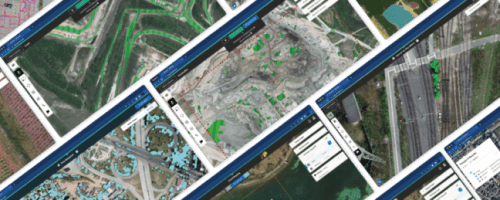Let’s face it. The number of animal extinctions has risen immeasurably in the last hundred years. Destroying natural habitats, climate disturbances, poaching – in the name of economic progress, us humans continue to have a negative impact on the ecosystem and contribute to animal extinction on an unprecedented scale. Measuring animal populations is often the first step towards raising awareness around this topic and taking well-prepared, effective action. The problem researchers face is how to detect and count animals in an efficient and environmentally-friendly way.
Traditionally, wildlife surveys have been conducted directly by researchers, often using vehicles. Despite being performed in good faith, this way is always invasive and stressful for animals. No wonder that drones are considered game-changers and a growing number of researchers are flying them over specific areas, taking high-quality photos and then using them to detect and count animals. The problem is that when done manually, this counting can take an enormous amount of time and resources. That’s why, researchers from the University of Santa Cruz, California, have used Picterra to let machine learning detect and count animals from orthophotos taken by drones.
Why Picterra?
UC Santa Cruz has flown drones over Año Nuevo island, which is a part of the Año Nuevo Reserve, off the shore of California. Their goal was to analyze the population of seals and sea lions, collectively known as pinnipeds because climate change has a significant impact on their habitats and behavioral changes. Fifty flights brought fifty orthomosaics covering the whole island at different dates. To start, researchers analyzed 25 photos. Manually, it would take them 17,5 days (!) to detect and count animals and with Picterra, they’ve got highly accurate results in five hours. Analyzing all 50 images would take approximately 8 hours, instead of 35 days of work.

How to detect and count animals using Picterra?
Roger Fong, our Computer Vision Engineer, has already described it in detail in the article on Medium ‘How to prevent animal extinctions with drones and machine learning’. It’s also a step-by-step tutorial, so you can follow it to count and detect animals from aerial images yourself!
The final shared project results can be found here.
In short, Picterra counted ~140k seals and sea lions across all 25 images and researchers could clearly see the changes of the pinnipeds’ population in 2018. It’s not only much less disturbing than conducting on-site wildlife surveying, but also much more efficient. Just imagine what researchers can achieve when they’re freed from a month of tedious, manual work of detecting and counting animals from drone imagery.
Similar results can also be achieved with cows, sheep and different farm animals. We’ve already covered it in the article about using machine learning to detect and count cows from aerial imagery.
Key takeaways
- Thanks to Picterra, the researchers from UC Santa Cruz spent 5 hours instead of 17,5 hours of manual work.
- The project is described in detail in How to prevent animal extinctions with drones and machine learning’ article on Medium.
- You can use Picterra to detect and count different animals, not only wildlife. In fact, we have lots of use cases involving detecting and counting cattle.
You can also count and detect animals from drone images, without writing a single line of code.








